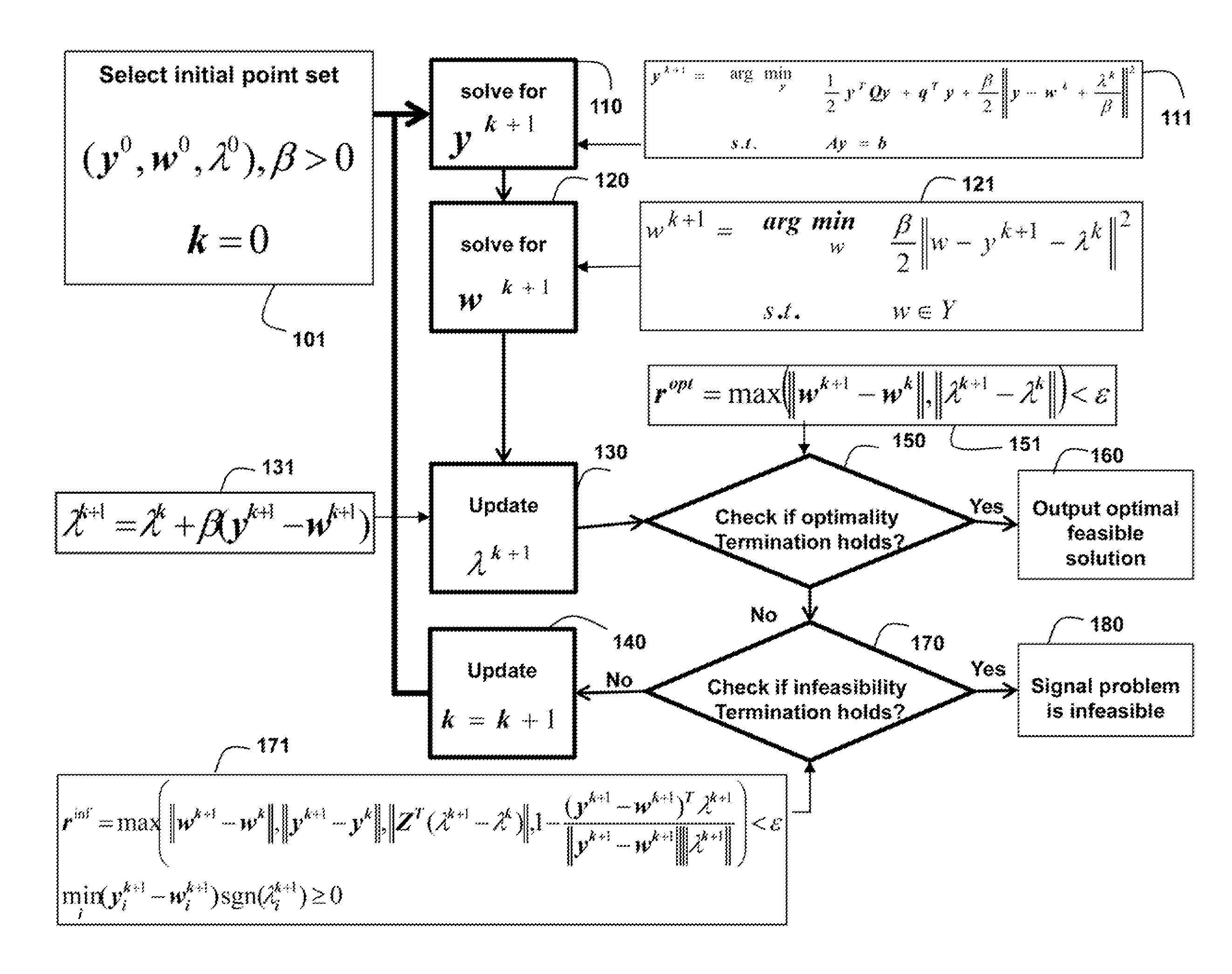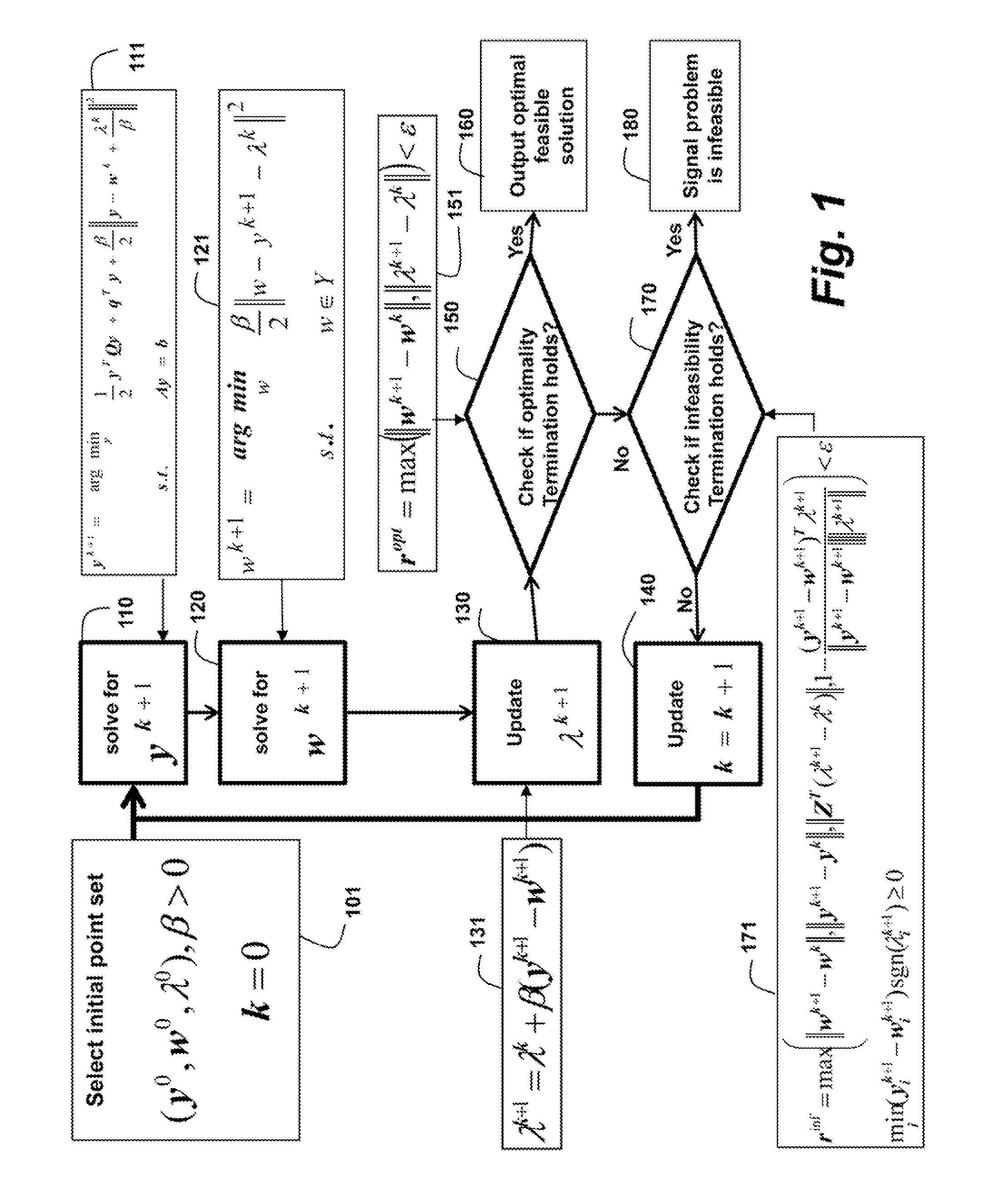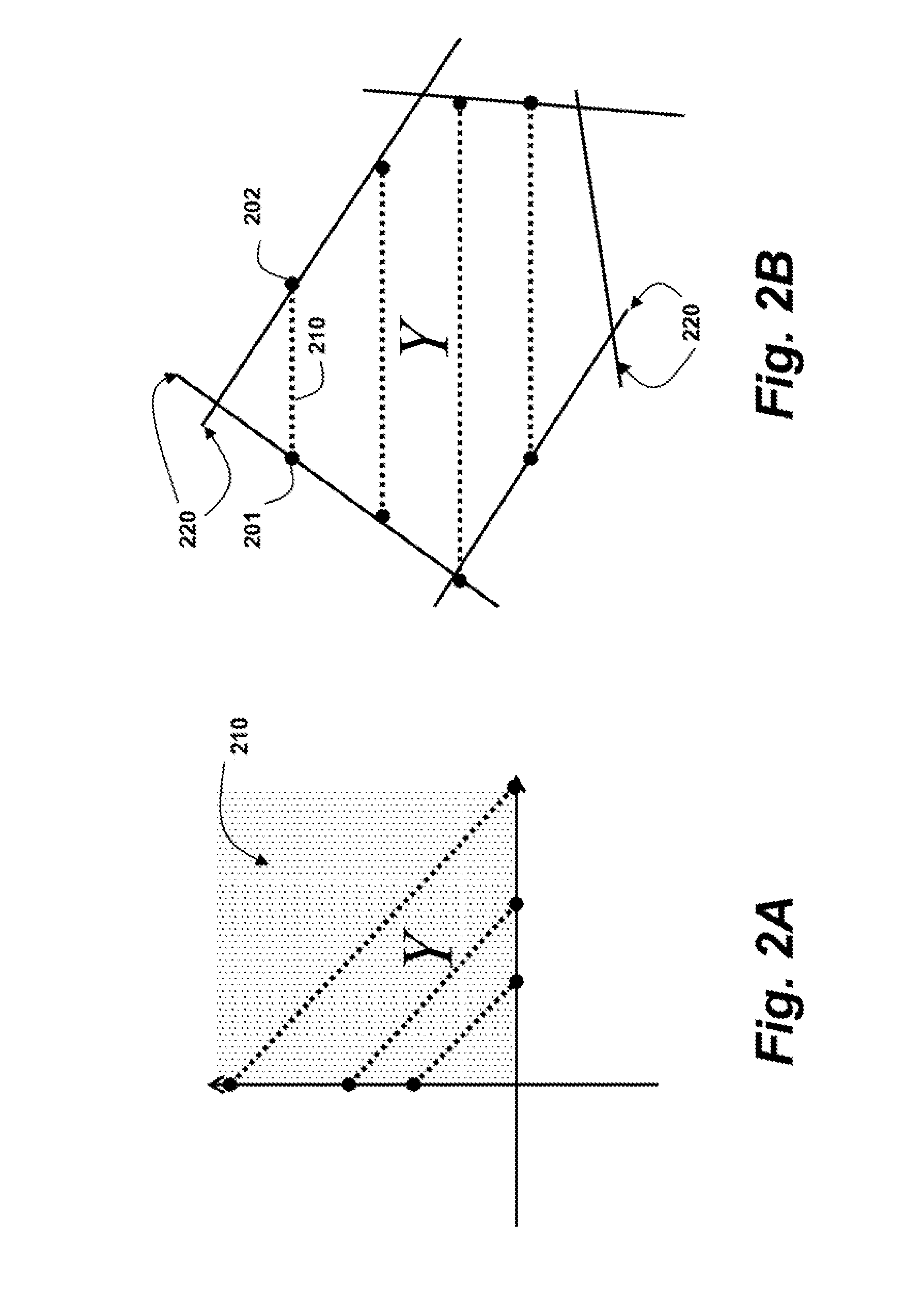Method for Solving Quadratic Programs for Convex Sets with Linear Equalities by an Alternating Direction Method of Multipliers with Optimized Step Sizes
a technology of linear equalities and quadratic programs, applied in the field of solving alternating direction methods of multipliers with optimized step sizes, can solve the problems of inability to easily handle linear inequality constraints such as gradient methods and accelerated gradient methods, and the computational effort per iteration of those methods can be prohibitive for large-scale applications, etc., to achieve the effect of minimizing violations of constraints
- Summary
- Abstract
- Description
- Claims
- Application Information
AI Technical Summary
Benefits of technology
Problems solved by technology
Method used
Image
Examples
Embodiment Construction
[0029]As shown in FIG. 1, the embodiments of the invention provide a method for solving a quadratic program (QP) for a convex set with general linear equalities and inequalities by an alternating direction method of multipliers (ADMM). The method optimizes the step size β of the ADMM to reduce the number of required iterations.
[0030]FIGS. 2A, 2B and 2C shows example convex sets Y that can be solved by the embodiments of the invention. In Euclidean space, a set is convex when, for every pair of points 201-202 in the set, every point on a straight line segment 210 that joins the pair of points is also in the set.
[0031]Specifically, FIG. 2A shows a convex set Y defined as a non-negative orthant 210. FIG. 2B is a schematic of a convex set Y defined as hyperplanes 220. Not sure why we have this figure, it is not related to anything in the spec or applications mentioned.
[0032]The uses of the methods described herein, representative equations, variables and parameters are specifically desc...
PUM
 Login to View More
Login to View More Abstract
Description
Claims
Application Information
 Login to View More
Login to View More - R&D
- Intellectual Property
- Life Sciences
- Materials
- Tech Scout
- Unparalleled Data Quality
- Higher Quality Content
- 60% Fewer Hallucinations
Browse by: Latest US Patents, China's latest patents, Technical Efficacy Thesaurus, Application Domain, Technology Topic, Popular Technical Reports.
© 2025 PatSnap. All rights reserved.Legal|Privacy policy|Modern Slavery Act Transparency Statement|Sitemap|About US| Contact US: help@patsnap.com



